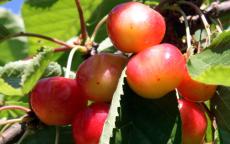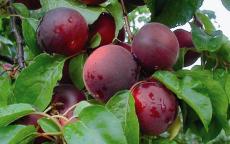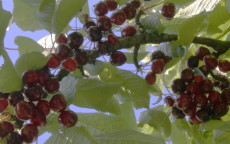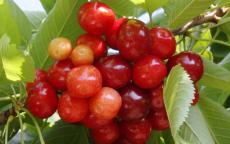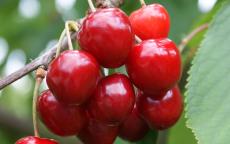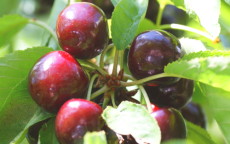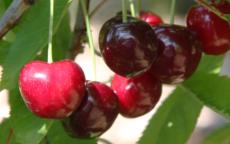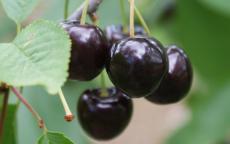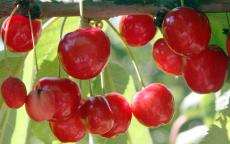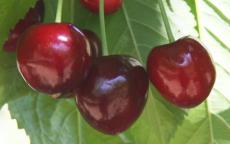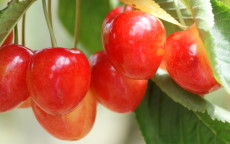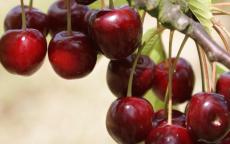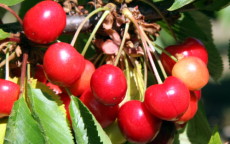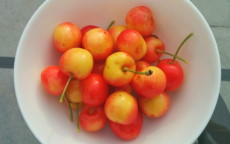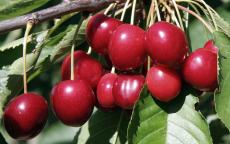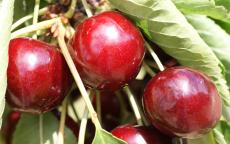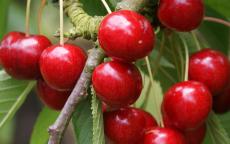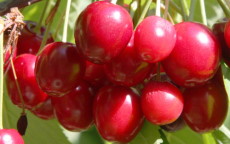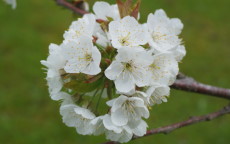- Sub-categories:
- Sweet cherries26
- Sour Cherry trees1
Cherry trees
Cherries are perhaps the most diverse member of the genus Prunus, which includes other popular stone fruits such as plums, peaches, and apricots. There are two main types, the sweet cherry Prunus avium (best for eating fresh) and the acid or sour cherry Prunus cerasus (best for culinary use).
Cherry trees are generally easy to grow, but sweet cherries like sun, so choose a sunny aspect when planting. All cherries prefer well-drained soil, so avoid areas that are prone to water-logging. The most serious disease affecting cherry trees is bacterial canker, and this tends to be more aggressive in wet soils. Unlike with other stone fruit such as plums, cherries do not need to be thinned.
The other main horticultural challenge is bird protection. It's a foregone conclusion that birds will get your cherry crop before you do, because they are prepared to eat slightly un-ripe cherries whereas humans are not. However the simple precaution of netting the trees just before the harvest will solve this problem - on very large and inaccessible trees drape a net over some of the lower branches, allowing the birds to take their share from the higher branches.
Cherry trees do not need much attention as they grow, a simple mulch to keep the area free of weeds is sufficient. Once fruiting begins the mulch remains important, and should be extended to match the spread of the branches, because it acts as a sponge and therefore helps prevent fruit-splitting after heavy downpours. You should also apply compost and/or manure during the winter to supply the tree with the nutrients it needs for growth and fruiting.
Provided you can keep the birds off, cherry trees make a good choice for the garden because cherries are a fruit that is best eaten straight from the tree - sweet cherries do not keep more than a day or so and the flavour fades very rapidly. Shop-bought cherries are often quite expensive, and can never be as fresh as those you pick from your own tree.
Sweet cherry varieties can be crudely classified into two groups: traditional English, and modern. The traditional English varieties are in fact mostly of central European origin (and have very un-English names) but were the mainstay of cherry orchards in Kent for the first half of the 20th century or earlier. These varieties are typified by good traditional cherry flavours, but are not particularly easy to grow and often have complicated pollination requirements.
Modern cherry development is now an international affair but was started by the Summerland research station in British Columbia, Canada, in the 1940s. The original objective was to tackle the horticultural problems associated with commercial cherry production, particularly fruit-splitting and pollination. The most famous of these new varieties is Stella but there are many others (often starting with an "S"-sound, such as Sweetheart, Sunburst, and Celeste). Whilst they lack the tradition and romance associated with the older English varieties, the flavours are still excellent and their self-fertility and easier horticultural characteristics make them a much better choice for the gardener with space for only one or two cherry trees.
Some other terms that often arise with cherries:
- Bigarreau. This means a firm-fleshed sweet cherry variety (as opposed to a soft flesh).
- Heart. Whilst most cherries are spherical, many have a distinct heart-like shape.
- White cherries. This refers to the flesh rather than the skin colour. Whilst most cherries have a dark flesh, white cherries have a white or pale yellow flesh. Most white cherries are old traditional varieties.
There is not such a great variation in the flavour of cherries as there is with, say, apples, so when choosing which varieties to grow, it is perhaps more important to think about the ripening season and other horticultural attributes. All cherries are superb if eaten straight from the tree on the day they
Amber Heart
The most popular traditional English white cherry, widely known as Kent Bigarreau.- Picking season: Mid
- Self-fertility: Not self-fertile
Aprikyra®
A sweet self-fertile apricot-cherry cross, also known as an Aprichery or Cherrycot- Self-fertility: Self-fertile
Athos®
A natural dwarf sweet cherry tree, unlikely to get much bigger than 2m.- Picking season: Mid
- Self-fertility: Self-fertile
Black Oliver
A traditional English black cherry from the West Midlands.- Picking season: Mid
- Self-fertility: Not self-fertile
Colney
Colney is a large modern late-season English dessert cherry, dark red/black, with a good flavour.- Picking season: Late
- Self-fertility: Not self-fertile
- Awards: RHS AGM (former)
Early Red Maraly®
Early Red is a modern dark red sweet cherry with a firm flesh.£54.00buy- Picking season: Early
- Self-fertility: Not self-fertile
Hertford
A large dark red English cherry with a good flavour.- Picking season: Late
- Self-fertility: Not self-fertile
- Awards: RHS AGM (former)
Knight's Early Black
A traditional English early-season black cherry- Picking season: Early
- Self-fertility: Not self-fertile
Merton Glory
A well-known mid-season English white cherry.£38.75 - £58.75buy- Picking season: Early
- Self-fertility: Not self-fertile
Napoleon Bigarreau
A traditional white cherry, with an excellent flavour and appearance.£39.50buy- Picking season: Mid
- Self-fertility: Not self-fertile
Nimba®
Nimba is a modern large-fruited red sweet cherry, ripening right at the start of the cherry season.- Picking season: Very early
- Self-fertility: Not self-fertile
Pacific Red®
Pacific Red is a modern large-fruited red sweet cherry with a firm flesh.- Picking season: Early
- Self-fertility: Self-fertile
StardustTM
Stardust is a new mid-season white cherry which is also fully self-fertile.£65.50buy- Picking season: Early
- Self-fertility: Self-fertile
Summer Sun
Summer Sun is productive mid-season cherry, and should ripen even if the summer weather is less than perfect.£38.75 - £64.50buy- Picking season: Mid
- Self-fertility: Partially self-fertile
- Awards: RHS AGM (current)
Sweetheart
Sweetheart is one of the best-flavoured late-season cherries for the UK climate.£40.50 - £65.50buy- Picking season: Late
- Self-fertility: Self-fertile
- Awards: RHS AGM (current)
Sylvia
Sylvia produces large dark red sweet cherries, ripening in the middle of the cherry season. It is a naturally small tree and grows with a columnar form, useful if space is limited.- Picking season: Mid
- Self-fertility: Not self-fertile
Tamara®
Tamara has probably the largest fruit size of any of the cherry varieties we offer.- Picking season: Late
- Self-fertility: Not self-fertile
Waterloo
Waterloo is a traditional English sweet cherry with a red / black skin.- Picking season: Mid
- Self-fertility: Not self-fertile
Need more help choosing cherry trees?
See our guides and recommended collections:

